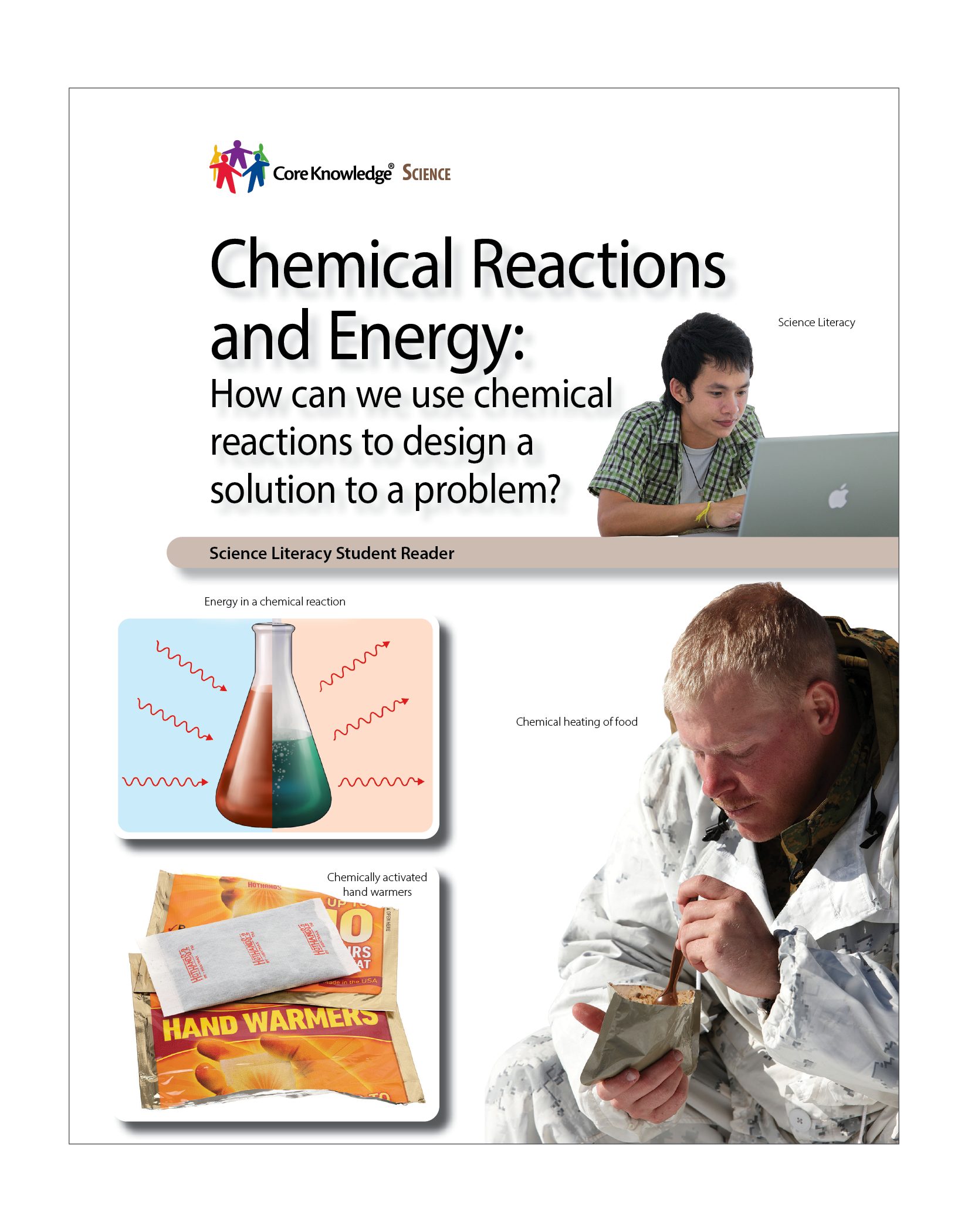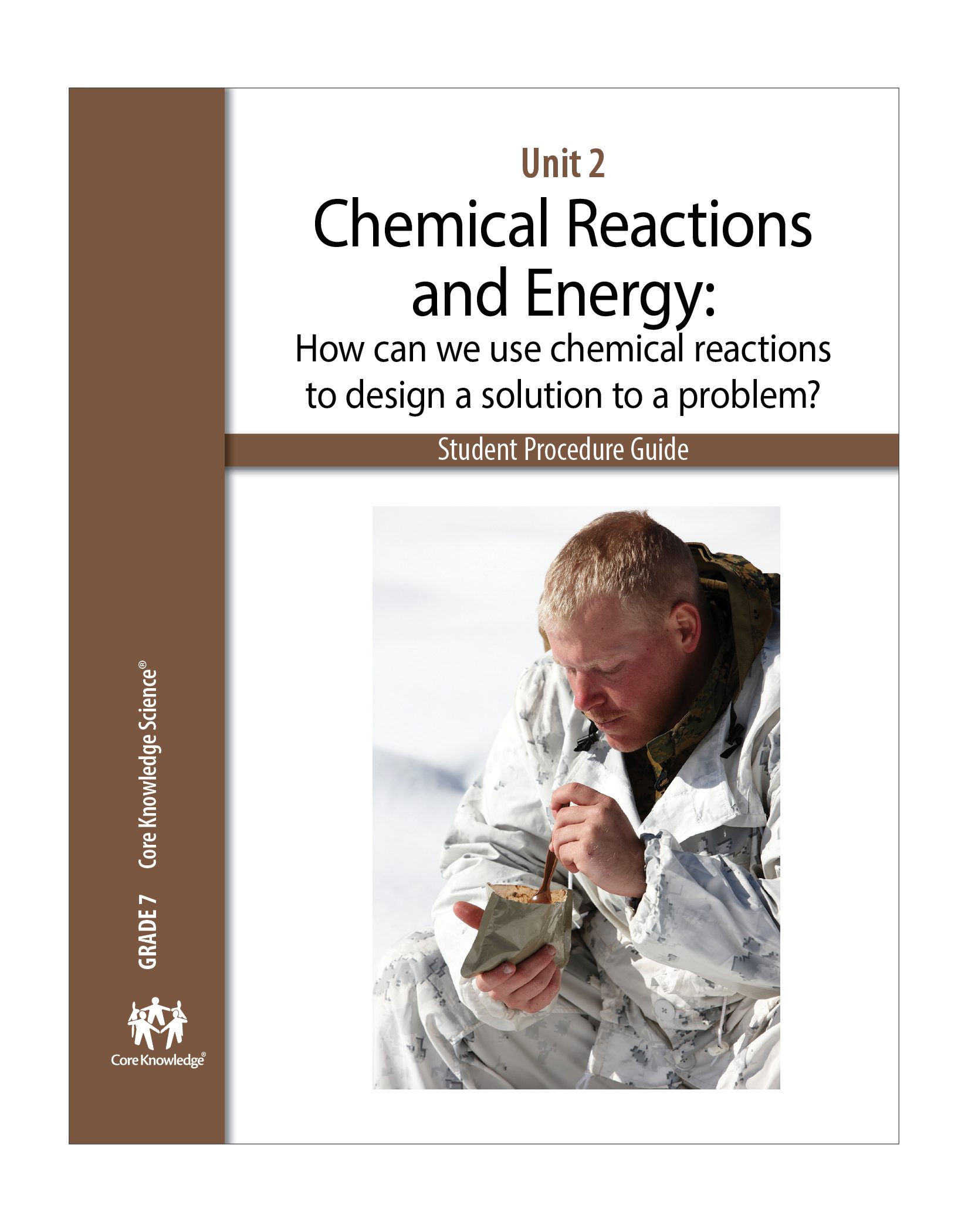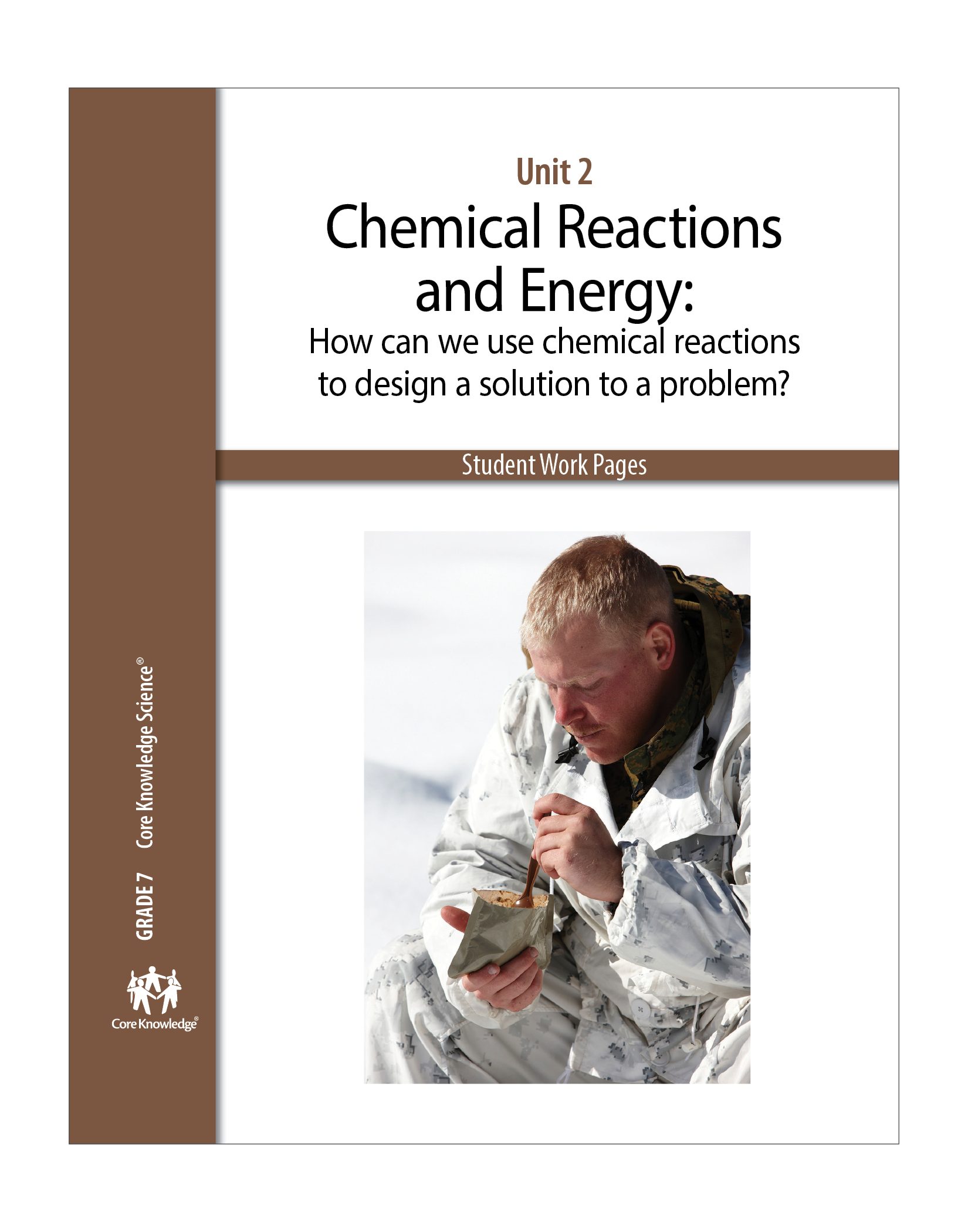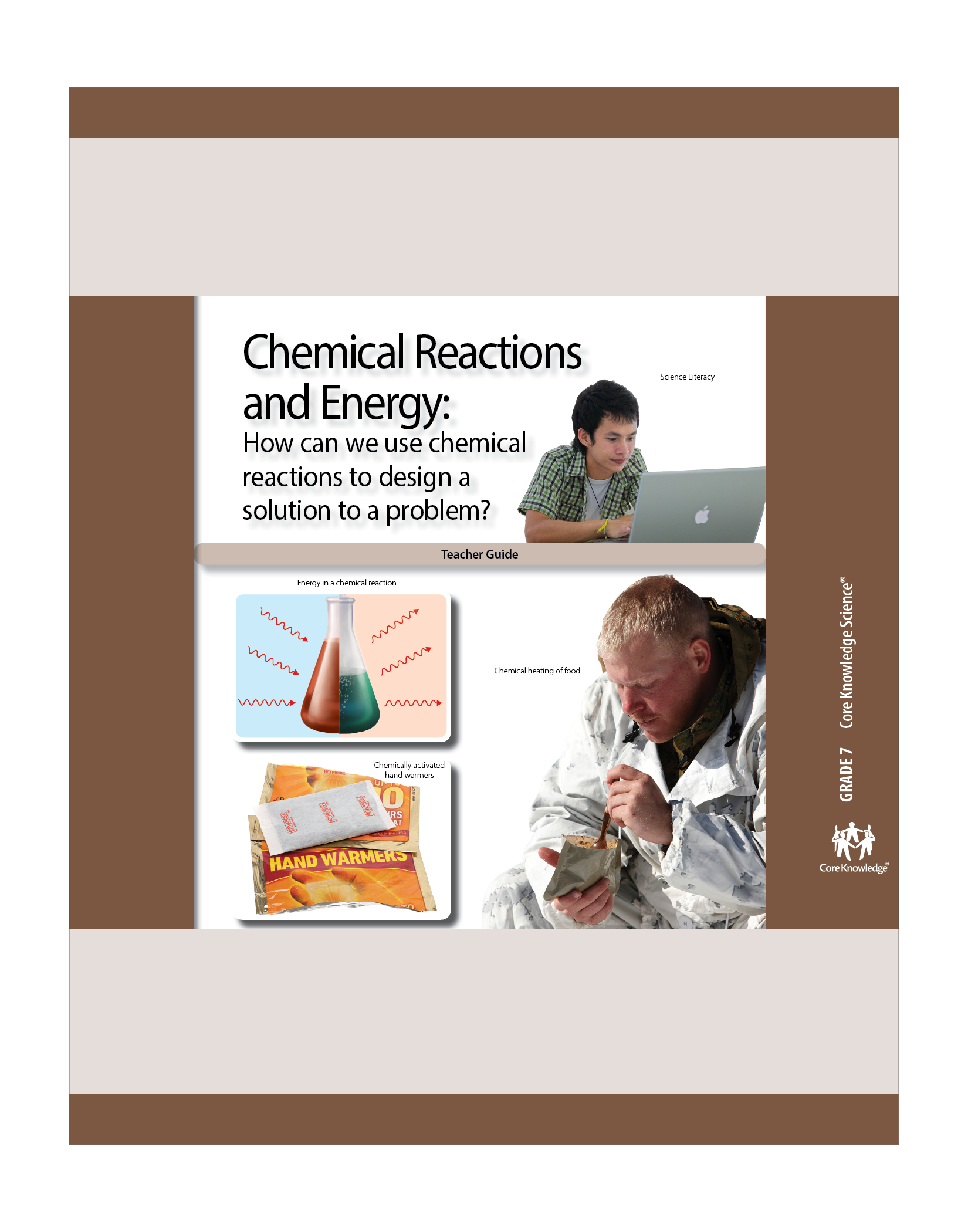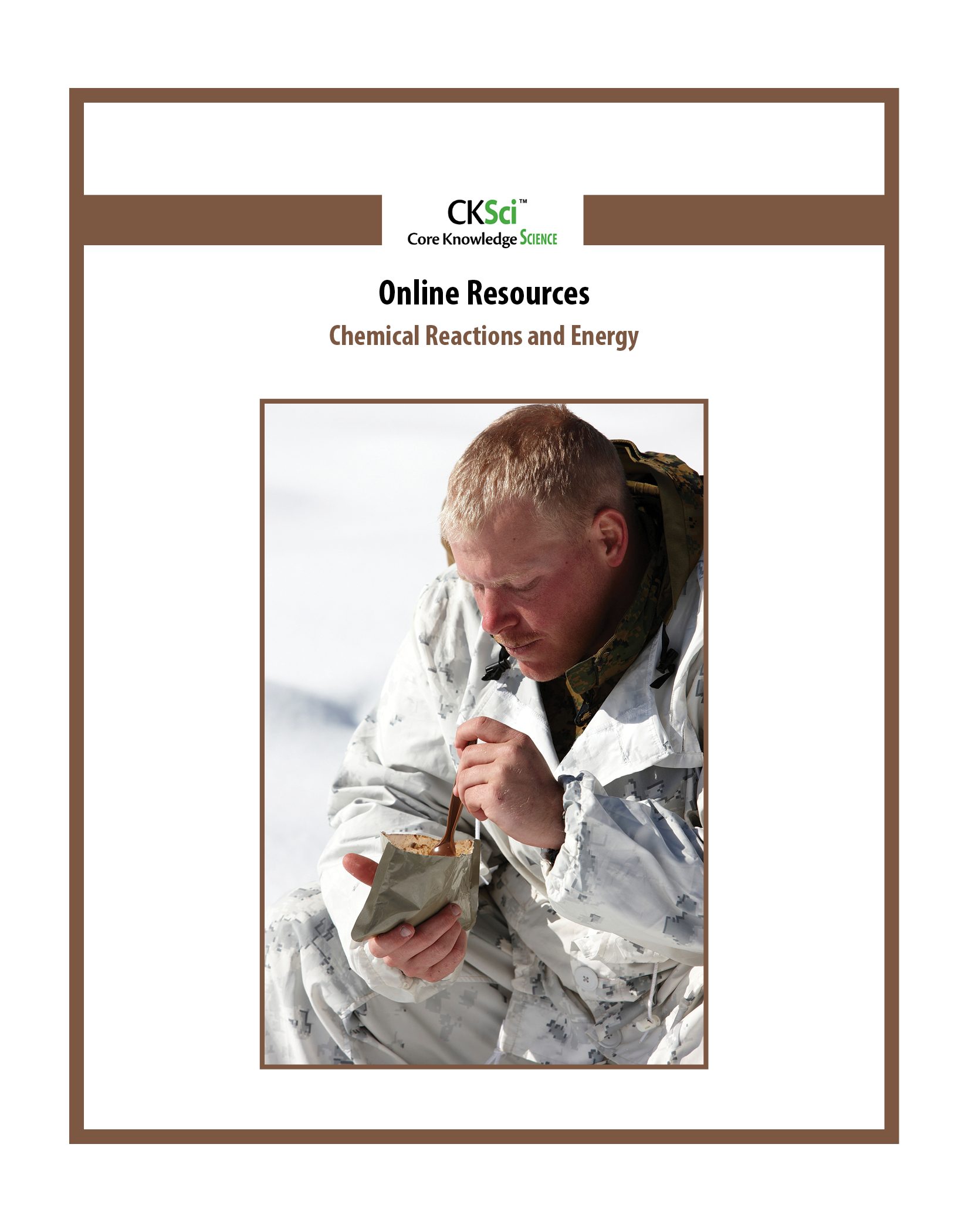
CKSci Unit 2: Chemical Reactions and Energy
Focus:
In this unit, students investigate the phenomenon of energy and its involvement in chemical reactions. The subtitle of this unit is How can use chemical reactions to design a solution to a problem? The observation of changes in energy during chemical reactions is a phenomenon that students experience when they see how flameless heating works in an MRE or an air-activated hand warmer. What reaction causes these to heat up? How much of each reactant is used to produce the desired amount of heat? How can we use this knowledge to engineer a homemade flameless heater? This unit allows students to observe weather and climate phenomenon in detail and then start to ask questions, formulate explanations, then set up and conduct activities and research. As students work with classmates to analyze their shared experiences, they can formulate new questions and develop new strategies for answering those questions as well as develop new products using the principles of engineering design. Students explore concepts that include the following:
- How do heaters get warm without a flame?
- What chemical reactions can be used to heat up food?
- How can we redesign a homemade flameless heater?
- What is our optimum design for a homemade flameless heater?
As students move through their day-to-day activities, they will also read Core Knowledge literacy selections. These include factual articles, history of the sciences, art and literature, spotting bad science in media and advertisements, graphics comprehension, research-type articles, reliability of sources, and other areas of science literacy.
Number of Lessons:
- Teacher Guide: 10 Lessons
- Student Reader: 4 Collections
Instruction Time (Student Reader):
- Lessons are designed to be completed in one or more class periods.
- A Pacing Guide found in Online Resources offers a suggested time to complete the entire unit if class is held each day.
- The entire unit should take about 21 days to complete if class is held each day.
- A complete list of Materials needed to complete the unit is provided in Online Resources.
Additional Search Terms:
chemical reaction • energy • science literacy • skepticism • flameless heater • endothermic chemical reaction • exothermic chemical reaction • product • reactant • engineering design process • constraints • criteria • stakeholder • feedback • optimize • nonfiction • informational text

